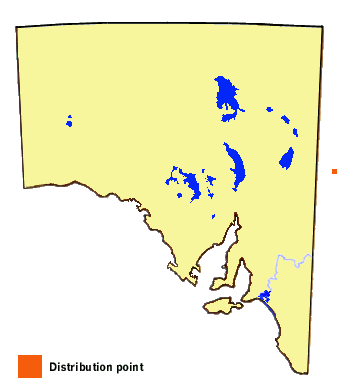Stencilled Hairstreak
Jalmenus ictinus (Hewitson)
Interesting Aspects
This butterfly has recently been recorded from the Broken Hill area of New South Wales, where it is known to occur in two colonies. One colony occurs in the Barrier Range north of Broken Hill, some 70 km to the east of South Australia's border with New South Wales, the other occurs 140 km east of Broken Hill.

Photography by R. P. Field © Museum Victoria Australia
The nominotypical butterfly from the eastern areas of Australia looks similar to Jalmenus lithochroa but is slightly larger and the underside markings are much more distinct with the markings being black rather than brown as in J. lithochroa. However, the form of the butterfly in the Broken Hill area is smaller than the nominotypical butterfly and its underside markings are brown rather than black. The butterfly belongs to the endemic Australian Theclinae, which have a very strong obligatory association with ants.
The butterflies are colonistic and usually remain very near to the colony. The males are often active as they fly about the foodplant looking for newly emerged females, but they can also spend a lot of time basking in the sun on the foliage in the higher outer parts of the hostplants. When not feeding, the females spend most of their time searching for places on the hostplants to lay eggs, by walking and testing suitable places in the foliage, branches or on the trunk, accompanied and protected by the large attendant meat-ants. However, this ant docility can quickly turn ferocious for any unwary human observer that gets too close to the colony inhabitants.
The early stages are similar to other Jalmenus species.
More Images of Stencilled Hairstreak
